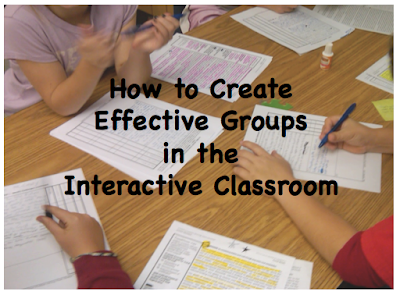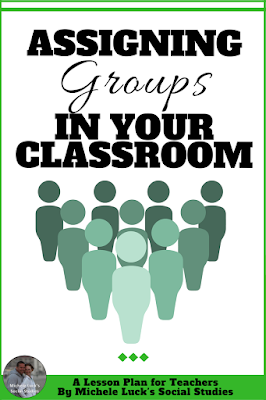
To create effective groups in your classroom, you have to keep one thing in mind: You are in charge, and what you say goes! No group assignment is written in stone, and can be quickly and even informally changed at any moment in time. It’s your call.
Another thing to consider is what type of group you want for each project. Should they be strictly defined, or can they be randomly assigned? I am a proponent of random assignment, and I happen to believe that in those random groupings, you will end up with mixed-ability sets. And again, you can always revert back to rule number 1: Mix them up after they are formed to get just that right interaction, whether it be for academic success or behavior control.
Random assignments are the easiest to create, and can be fun and engaging in the process:
Small Groups:
- For creating pairs, I love to use “Find Someone Who” or Meet & Match activities. Students are given matching cards or clues and they must find each other to start the activity. This gives students some time to stretch their legs, while also encouraging them to think critically as they search for the right partner.
Larger Grouping:
- Hand out markers as students enter the classroom and direct them to sit in matching groups by color.
- Distribute Vocabulary Cards and have students match themselves by term, definition, and significance.
- Review Geography as you match up groups by passing out city names and having students group by state.
- Use Timeline Clues to match groups into categories by year or any other time frame.
- Match Task Cards providing some students clues and others questions to form groups as they solve the clues or complete the tasks.
- Play games or complete Scavenger Hunts, matching students as they find the correct answers for given clues.

Mixing Up Groups:
- To keep things moving, use a Jigsaw Activity. This is great for studying varied topics at once and allowing student groups to research and share the key content.
- First assign students into groups of 5. Do this by number, color, alphabet, or any other strategy.
- Allow students to work on an assigned task or to gather information on a specific topic within each group.
- As student groups are finishing up the first task, reassign students through a different strategy. One of my favorites to use at this point was 5 different stickers that I quietly placed on each student’s hand as they worked. I used to draw different colored smiley faces on their hands, which the high school students LOVED, but had some parents complain, so KNOW your students and parents first!
- Have students jigsaw to their new groups where they can share out the information from their original groups’ investigations and research. This is great for requiring EVERY student’s participation since the others in the groups are dependent on their contribution!
Finally, one of the most valuable group interactions in your class can be with Response Groups. My rule of thumb is to either allow student choice in forming their groups, or set up groups where you are confident the personalities will match and work cooperatively in discussion. Response groups allow students to work together in researching tough subjects and in reporting the information they gather out to the class, often sharing a consensus opinion or suggestion on the topic. In the end, these response group activities can be very effective in building a cooperative classroom climate.

My three favorite Response Group Activities are on topics that can bring students together to share events that are sometimes seen only in terms of facts, yet should include emotion in their discussion and curricular coverage:
- September 11th, 2001 Response Group Activity
- Reconstruction Road to Rights Response Group Activity
- German Anti-Semitic Propaganda Response Group Analysis Activity
And remember: Groups help students to engage in the content in a more interactive and collaborative way. IF that is not happening in your assigned groups – Change Them!

Happy Teaching!